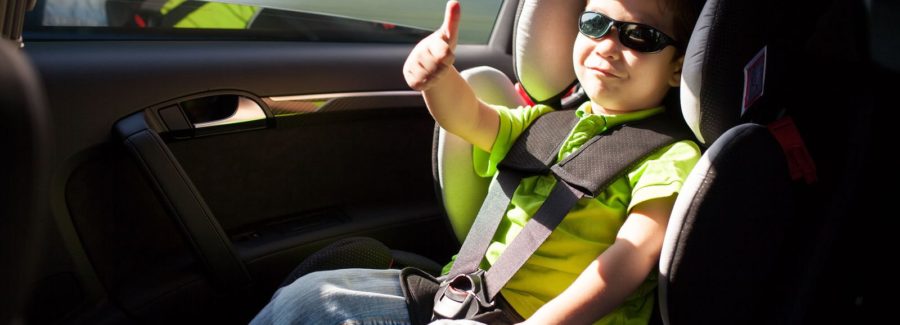8:00 - 17:00
Opening Hour: Mon - Fri
When you are choosing a new car it’s important to understand the safety features. Two different vehicles can have very different results when they are involved in a collision.
The Insurance Institute for Highway Safety (IIHS), a nonprofit organization funded by auto insurance companies, and the Highway Loss Data Institute (HLDI), another nonprofit organization that publishes insurance loss data, perform a test of crashworthiness on new cars.
Using this data, we’ll be comparing the safety ratings of the Chevy Trax and the Ford Escape.
See how much a difference the safety ratings of vehicles make on car insurance premiums. Enter your ZIP code into our free comparison tool to find the best rate for your coverage needs.
Table of Contents
How a vehicle withstands a crash is a test of its crashworthiness. The IIHS and the HLDI assess how a vehicle holds up when it crashes into a stationary object on the driver’s side and the passenger’s side.
Other tests include running into something nearly head-on, side-impact safety, roof strength, and safety of seats and head restraints.
A few other major tests are included in this process. One tests the vehicle’s ability to avoid a collision at slow and moderate speeds. The effectiveness of headlights is reviewed. The LATCH system, lower anchors and tethers for children, is tested for ease of use for the parents.
Each test is scored with one of four ratings:
The Chevy Trax achieved an overall score of Good for crashworthiness. It aced every element of the test except for one.
On the test of a small overlap collision on both the driver’s side and passenger’s side, the space for both the driver and passenger was invaded a little too much for a score of Good in both the foot and leg area and the upper area and dash.
Even with this deduction, the chances of injury to the driver are still low based on the damage to the vehicle.
In this test, the front and side-curtain airbags did their jobs. In the passenger-side test, the dummy’s head rolled to the right as a result of the seat belt allowing the dummy’s body to move forward too quickly.
The Ford Escape had very similar results as the Chevy Trax in the crashworthiness test.
It also achieved an overall rating of Good in crashworthiness. Invasion of the upper and lower drivers-side space was too much for a rating of Good on that element, but it was still assessed to have a low chance of driver injury.
Like the Trax, the test of the Escape revealed the unwanted movement of the dummy’s head during a collision. The head encountered the airbags, but tilted to the left, allowing the opportunity for injury to occur.
Enter your ZIP code below to view companies that have cheap auto insurance rates.

This test is a newer addition to the IIHS and HLDI tests for safety. It measures the ability of a vehicle’s auto brake to avoid or greatly decrease speed in a slow- or moderate-speed collision. To be rated Superior or Advanced, an auto brake system must be present.
Neither the Chevy Trax nor the Ford Escape is equipped with an auto brake. The Chevy Trax has an optional forward collision alert, but it doesn’t engage the braking system.
They have both been awarded a rating of Basic on this test because they meet the standards of the National Highway Traffic Safety Administration (NHTSA).

The Chevy Trax received a rating of Acceptable for the LATCH system. The lower anchors reside more than ¾ of an inch within the seat, making them more difficult than necessary for a parent to locate.
Another deduction for the Trax LATCH system was taken because the upper tether, which holds the top of a child safety seat steady, should be positioned in the upper 85 percent of the seatback, but the tether was located deeper in the seat than that.
Also, the hardware for the tether could be confused with other hardware and could cause improper installation by parents.
The test did find that the latches and tethers were easy to find and maneuver around.
The Ford Escape received deductions for the same benchmarks as the Trax. It positioned the latches too deep in the seat and the tether hardware could be confused with other hardware in the car.
In addition to missing these two benchmarks, one of the seats had hardware that was hard to maneuver around, earning the LATCH system in the Escape a rating of Marginal, two ratings below the best rating of Good.
Neither the Chevy Trax nor the Ford Escape was named as Top Safety Picks of 2017.
For this distinction, a vehicle must receive a rating of Good in crashworthiness, which they both did, and receive a rating of Advanced or Superior in the front crash prevention test.
Neither of these vehicles is equipped with autobraking, so they cannot be considered for that designation.
The Chevy Trax and the Ford Escape are pretty evenly matched when it comes to safety.
They both hold up well in a crash. Neither offers auto braking, a feature that is quickly becoming a vital safety tool. If you have children, you may want to consider the Marginal rating given to the LATCH system in the Ford Escape.
It is still effective for keeping a child-safe, as long as it is properly installed. If you are choosing between these two small SUVs based on safety, it is basically a dead heat.
When you are considering the costs of a new car, you should also consider the cost of insurance. Some cars cost much more to insure than others. Every insurance company considers factors including the following:
Before deciding on a model, compare insurance quotes for free right here. You may end up paying a little more upfront, but less for your car over time.
Safety Comparisons